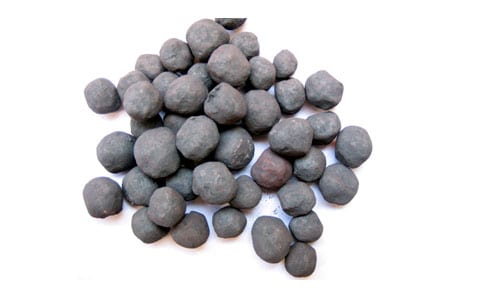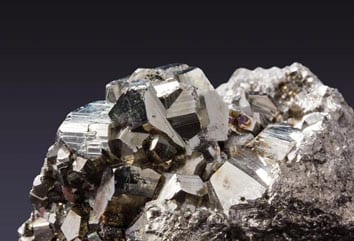Select Language:
Iron ore is the fourth most common element in earth’s crust. Iron is essential to steel manufacturing and therefore an essential material for global economic development. Iron is also widely used in construction and the manufacturing of vehicles. Most of iron ore resources are composed of metamorphosed banded iron formations (BIF) in which iron is commonly found in the form of oxides, hydroxides and to a lesser extent carbonates.
The chemical composition of iron ores has an apparent wide range in chemical composition especially for Fe content and associated gangue minerals. Major iron minerals associated with most of the iron ores are hematite, goethite, limonite and magnetite. The main contaminants in iron ores are SiO2 and Al2O3. The typical silica and alumina bearing minerals present in iron ores are quartz, kaolinite, gibbsite, diaspore and corundum. Of these it is often observed that quartz is the main silica bearing mineral and kaolinite and gibbsite are the two-main alumina bearing minerals.


Iron ore extraction is mainly performed through open pit mining operations, resulting in significant tailings generation. The iron ore production system usually involves three stages: mining, processing and pelletizing activities. Of these, processing ensures that an adequate iron grade and chemistry is achieved prior to the pelletizing stage. Processing includes crushing, classification, milling, and concentration aiming at increasing the iron content while reducing the amount of gangue minerals. Each mineral deposit has its own unique characteristics with respect to iron and gangue bearing minerals, and therefore it requires a different concentration technique.
Magnetic separation is typically used in high-grade iron ore beneficiation where the dominant iron minerals are ferro and paramagnetic. Wet and dry low-intensity magnetic separation (LIMS) techniques are used to process ores with strong magnetic properties such as magnetite while wet high-intensity magnetic separation is used to separate the Fe-bearing minerals with weak magnetic properties such as hematite from gangue minerals. Iron ores such goethite and limonite are commonly found in tailings and does not separate very well by either technique.

Flotation is used to reduce the content of impurities in low-grade iron ores. Iron ores can be concentrated either by direct anionic flotation of iron oxides or reverse cationic flotation of silica, however reverse cationic flotation remains the most popular flotation route used in the iron industry. The use of flotation its limited by the cost of reagents, the presence of silica and alumina-rich slimes and the presence of carbonate minerals. Moreover, flotation requires waste water treatment and the use of downstream dewatering for dry final applications.
The use of flotation for the concentration of iron also involves desliming as floating in the presence of fines results in decreased efficiency and high reagent costs. Desliming is particularly critical for the removal of alumina as the separation of gibbsite from hematite or goethite by any surface-active agents is quite difficult. Most of alumina bearing minerals occurs in the finer size range (<20um) allowing for its removal through desliming. Overall, a high concentration of fines (<20um) and alumina increases the required cationic collector dose and decreases selectivity dramatically. Therefore desliming increases flotation efficiency, but results in a large volume of tailings and in loss of iron to the tailings stream.
Dry processing of iron ore presents an opportunity to eliminate costs and wet tailings generation associated with flotation and wet magnetic separation circuits. STET has evaluated several iron ore tailings and run of mine ore samples at bench scale (pre-feasibility scale). Significant movement of iron and silicates was observed, with examples highlighted in the table below.

The results of this study demonstrated that low-grade iron ore fines can be upgraded by means of STET tribo-electrostatic belt separator. Based on STET experience, the product recovery and/or grade will significantly improve at pilot scale processing, as compared to the bench-scale test device utilized during these iron ore trials.
The STET dry electrostatic fine iron ore separation process offers many advantages over traditional wet processing methods, such as magnetics or flotation, including:
Contact us to learn more about dry processing of iron ore.
References: